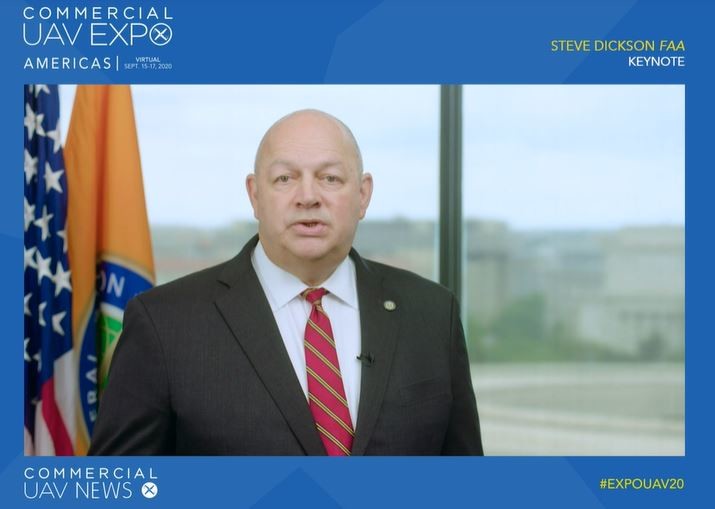In an industry so dependent on regulations from a federal agency, the opportunity to hear directly from the head of that agency is always welcome. Yesterday, Steve Dickson, the FAA (Federal Aviation Administration) administrator, opened the proceedings of the 2020 Virtual Commercial UAV Expo with a comprehensive update on where his agency stands in terms of regulations for unmanned aerial vehicles (UAVs) and his plans for the future.
His remarks were framed by the word “Safety” and the need to keep current levels of safety for the flying public, while making every effort in integrating unmanned aircraft to the national airspace (NAS) as soon as practicable.
“If you operate a drone, you are a pilot,” he said in no uncertain terms. “And you have the same roles and responsibilities of manned aircraft pilots.”
This is a concept that should resonate with everyone of us in the unmanned industry. The fact that you are not inside your vehicle is irrelevant, you are pilot in command (PIC) and, therefore, responsible for the wellbeing of your aircraft and the people on the ground.
He then cited success stories of people and organizations that are, today, using UAVs to perform their duties in a more efficient and safe manner. He specifically mentioned:
- The North Carolina effort to deliver blood samples and tests across hospital campuses.
- The Chula Vista Police efforts to incorporate drones into their day-to-day operations.
- The FEDEX Memphis airport operations that now include aircraft inspections using drones.
- Zipline making inroads with initial deliveries in North Carolina and North Dakota.
- Flirtey medicine deliveries.
Then he proceeded to update the audience on the more thorny issue of the Remote ID Notice of Proposed Rule Making (RID NPRM), mentioning that there were a total of 53,000 comments received and that his agency is carefully evaluating every single one to make sure the voice of the public is heard. He concluded that this is a large process but that he envisions it will be finished by the end of the year.
With regards to flights beyond visual line of sight (BVLOS), Administrator Dickson seemed to be fully aware of the importance that these operations are to the development of a robust unmanned industry when he said “We are working with all stakeholders in developing an environment where repeatable, reliable and secure BVLOS flights can be performed by UAVs in the NAS.”
He pointed out that more organizations are applying, and receiving, their Part 135 certification, citing examples such as Amazon Prime Air receiving its Part 135 certification. Dickson sees these as preparations for a future where manned and unmanned aircraft will share controlled airspace.
Dickson also mentioned the technologies that would make the integration happen, such as detect and avoid (DAA), ground and onboard radar systems, and many others. He made emphasis that every citizen can go to Beta.Sam.Gov and look for opportunities to contribute to the effort.
As he approached the end of his remarks, he mentioned the issue of Advanced Air Mobility (AAM, what we used to call urban air mobility) and predicted that we will have some sort of limited deployment within two years. He was excited to mention that in a short period of time the world has gone from seven manufacturers of AAM aircraft to over 200 today with that number growing.
“Safety is a journey, not a destination,” he concluded. “We are working with NASA and every other interested party in making this integration happen, but we must make sure we keep the current levels of safety and reliability of the system we have today.”
In his closing words, he pointed out the importance of conferences like Commercial UAV Expo in the drone ecosystem. “This conference will contribute to strengthening the communication between industry, academia and the FAA.”















Comments